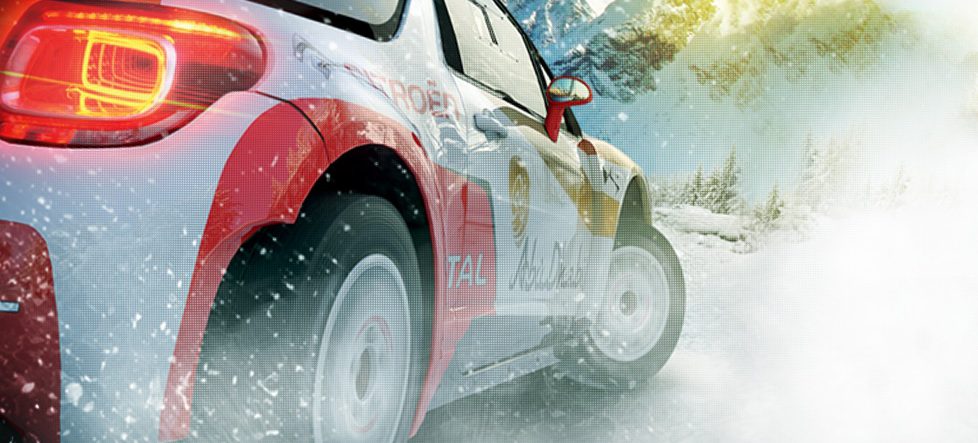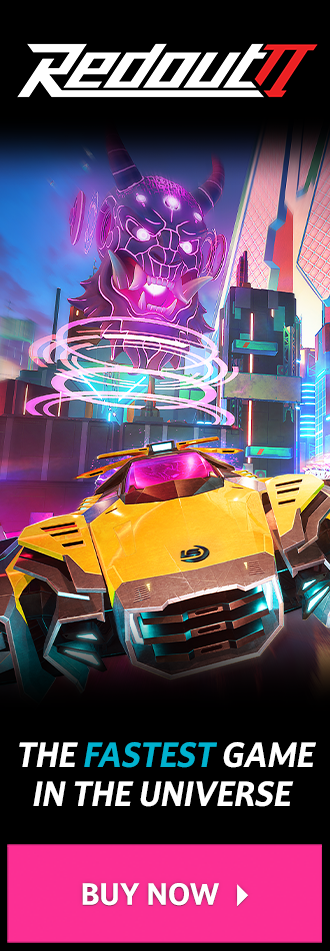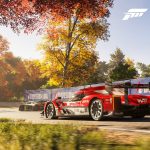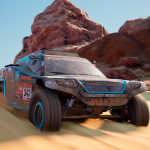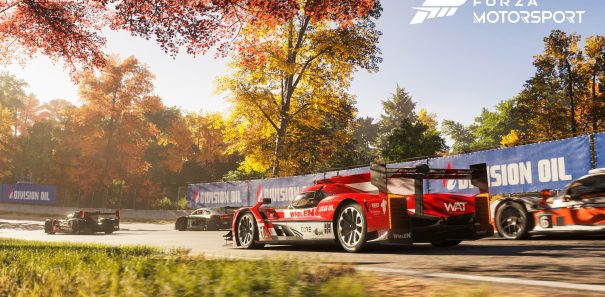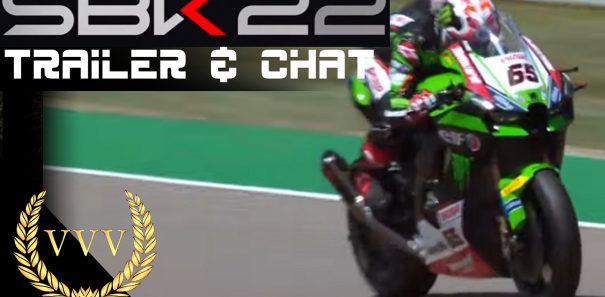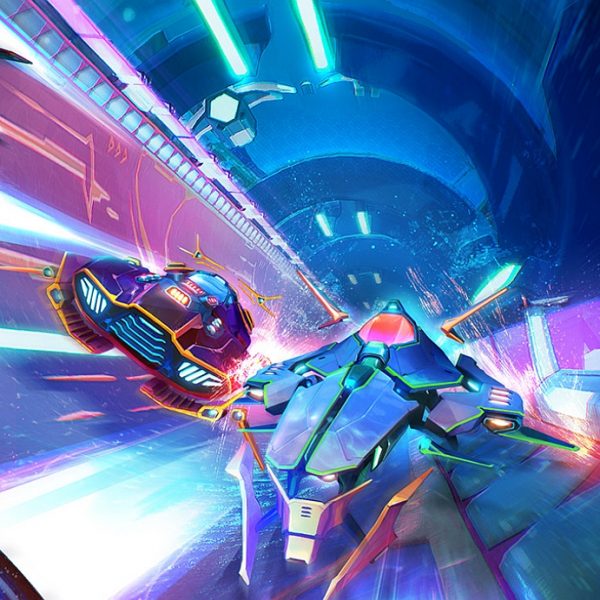‘Authenticity’ is Milestone’s favourite word. For years, the Italian developer has focused on niche racing simulation titles, striving to create authentic game replications of licensed motorsport disciplines. Until recently, they have struggled to achieve this however, as their titles often lagged behind the competition. Last year’s WRC 3 veered closer to their vision, but it was this year’s MotoGP ’13 that showed Milestone at their pinnacle; a focused, realistic bike simulation that did the sport supreme justice and kickstarted the stalled bike racing genre back on track. It stands as one of the most meticulous motorsport games in years, even surpassing Codemasters’ Formula One games in terms of authenticity.
WRC 4 follows in the same vein as MotoGP ’13 in this regard, with a stringent focus on, you guessed it, authenticity. Milestone’s unbridled passion for motorsport is evident as soon as you boot up WRC 4, greeting you with its new professional veneer. Gone is the childish cartoony artwork (unlike many, I actually rather liked it – it was refreshing to see hand-painted art in a video game courtesy of renowned motorsport artist Andrea Del Pesco) and grating dubstep dross from WRC 3, replaced with a slick background montage of slowmo live action footage from the real world WRC accompanied with a soothing orchestral score that gives the game a grandiose sense of occasion. Unsurprisingly, this polished presentation is identical to its two wheeled counterpart Moto GP ’13, creating a pleasing synergy between the two series.

Reinventing the wheel
The same is true for WRC 4’s redesigned career. Milestone was clearly conscious of Codemasters’ success with the DiRT series when developing WRC 3, and the result was an unfocused ‘Road to Glory’ career mode overrun with casual challenges alongside the traditional point-to-point rallies. While they were a welcome diversion from the relentless concentration required when rallying that didn’t overshadow the core point-to-point time trials as many had initially feared, it was a poor substitute for the fully fledged career in WRC 2.
WRC 4’s career reinstates this focused, authentic approach with a career mode that closely resembles the journey of a rally driver in the WRC, from the humble beginnings of acquiring sponsors and team contracts to becoming a world champion. Like MotoGP ‘13, WRC 4 eases you in gently, starting you in the lower class Junior WRC cars. After a few stages dithering about in a sluggish Ford Fiesta R2 you do start to crave more power, however – the early stages can feel more like a casual cruise in the countryside rather than a hair-raising rally.
Thankfully, Milestone is aware of this and have restricted the introductory Junior WRC season to just two six stage rallies, so it doesn’t outstay its welcome and offers just enough time for novice players to hone their skills. An opening video tutorial also provides helpful advice on rally driving techniques for learner drivers – a feature that was curiously absent in WRC 3 considering that rally driving requires a very different skillset to circuit racing. If you want to spend more time in the lower classes, you can drive a full WRC season in the Rally mode outside of the Career with any car class, with options to race in a single special stage, a full six stage rally or a complete championship of 13 rallies.
Like many licensed racing games, WRC 4’s career is situated in an interactive office environment, with options to view the current race calendar, check emails and follow championship progress via news feeds. Initially you are asked to assign a co-driver, team manager and even customise your number plate, but these are purely for cosmetic purposes. From here, your Team Manager will pummel you with pre-determined emails detailing objectives, information on rival drivers and feedback on your performance. Once the first Junior WRC season is completed, your inbox is flooded with team contract offers inviting you into the faster WRC 3 and 2 classes in longer seasons, before the daunting 13 rally calendar that makes up the professional WRC class.

It’s not exactly a revolutionary structure, and is by-and-large the same standard career mode we’ve seen in a countless number of racing games before it based on an official license requiring you to rise up the ranks, but it’s a well-executed portrayal of a real rally driver’s career. By covering every facet of the sport and not just focusing on the professional WRC class, you get a comprehensive overview of the championship, engaging you as you progress from young rookie hotshot to professional rally driver. It’s a feeling that’s sorely lacking in Codemasters’ Formula One series by comparison – yes, you still start with the true-to-life Young Drivers Test, but the Formula Two and Three classes that make up the journey to Formula One are skipped over entirely.
Fans of WRC will appreciate Milestone’s attempts to immerse you into the life of a rally driver. Unlike WRC 3 which pitted you against crudely-drawn fictional characters, you’re competing against the real life WRC drivers whose mug shots pop up during the loading screens commenting on the sort of mechanical issues a real rally driver would encounter. They’ll also react to your position in the championship: finish first frequently or beat a rival’s time by a huge margin, and they’ll start to resent you, referring to you by name in their envious comments. Likewise, perform poorly and they’ll ridicule your failure.
Fine-tuned
WRC 4 features all the cars and teams of the 2013 WRC season across the WRC Junior, WRC 3, WRC 2 and WRC classes. This includes the new Volkswagen Polo R and the debut of the Hyundai i20; the first time Hyundai has participated in the championship for 10 years (remember the Hyundai Accent in Evolution’s WRC series?). Disappointingly however, licensing regulations have meant that classic rally cars, such as the notorious Group B class, have been dropped in WRC 4, despite appearing in every Milestone WRC game before it. Since Milestone is obviously tied to the 2013 season, they had to stick with the 15 official cars participating in the championship, but only five of these are from the faster WRC class you’ll most likely spend the most time with. Consequently, WRC 4’s roster feels a tad skimpy.
Still, the cars that do feature have been modelled with impressive intricacy for a current-generation game, sporting lifelike details when viewed up-close in the showroom. Each class of car have their own distinct handling characteristics too: Junior WRC cars understeer and feel unwieldy, whereas the top class WRC cars feel feisty and love to slide.

Once again, WRC 4’s physics waver between arcade and simulation, but lean more towards the latter. They’re by no means as deep as the benchmark set by Richard Burns Rally which has yet to be beaten, but WRC 4 is aimed for people who enjoyed Colin McRae Rally, so it doesn’t need to be.
As with many racing games, an assortment of assists can be applied for less experienced drivers. In fact I’d say too many are turned on by default, making the driving feel too forgiving and artificial. Having said that, the physics underpinning WRC 4 should satisfy players who want a realistic rallying experience. While the handling isn’t a radical departure from WRC 3, you can tell that Milestone has done some tinkering under the bonnet. Sliding, an integral element of rallying, feels more intuitive thanks to the improved sense of weight distribution, and you can feel the suspension react accordingly as the car adapts to different terrain or goes airborne in a jump, resulting in visible negative camber. My main gripe, though, is that there is too much grip at times, particularly on gravel surfaces.
WRC 4 also performs markedly better on a wheel compared to its predecessors, with full 900 degree support at long last. Likewise, applying the handbrake finally feels natural with a wheel – executing a perfect hairpin handbrake turn is as satisfying as it is enthralling. If you own a wheel, you owe it to yourself to take WRC 4 out for a spin.
Damage plays a pivotal role in WRC 4. Brutal crashes are an all-too-common sight in the WRC as the fearless drivers push their cars to the limit in hazardous conditions. WRC 4 accurately replicates these consequential crashes when you inevitably end up kissing a tree. Bodywork buckles and dynamically deforms, reducing your car to a hobbled wreck. Careless driving can scupper your chances for victory too, as severe knocks will hamper the car’s performance and you can only visit the service park for repairs after completing two stages in a rally – I lost count of the number of times I had to start a stage with steam erupting from the bonnet. It pays to be selective when applying repairs however, as each aspect of the car you fix adds additional time penalties.
Super special stages
WRC 4’s myriad of special stages have been significantly spruced up this time round. Milestone went to great lengths to improve the graphics, retexturing every stage with added detail and, in some cases, redesigning them completely. Finland, for example, has had a complete transformation; a fast and flowing fan favourite location offering a series of technical stages rife with tricky tight turns, exhilarating jumps and harrowing high speed sections. Germany, one of the less enchanting locations in WRC 3, has been similarly redesigned and Australia has also been reprised from WRC 2 since it was reintroduced to this year’s WRC calendar – the difference in visual quality from WRC 2 to WRC 4 is simply night and day.
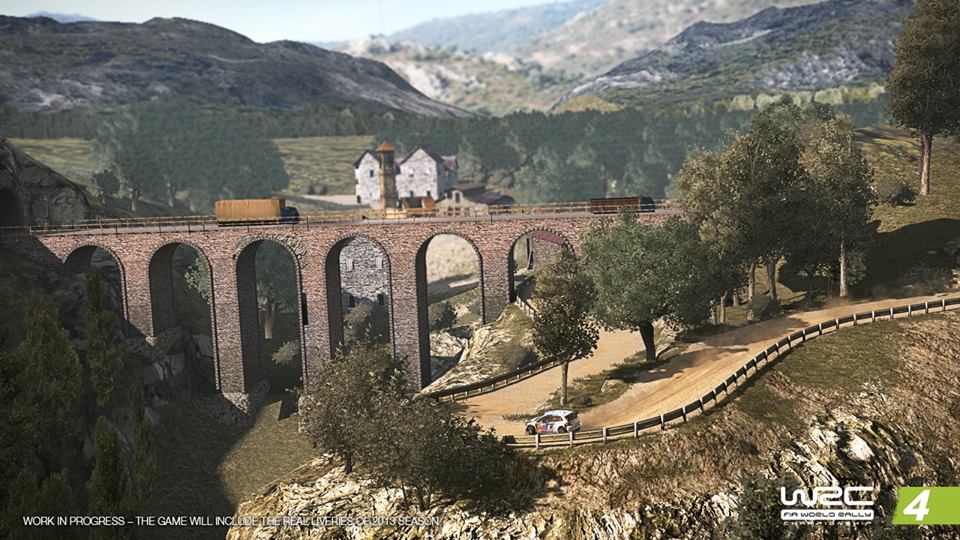
WRC’s special stages have often looked sterile, but Milestone has finally breathed some much-needed life into them by adding swarms of spectators and an influx of trackside objects such as additional rocks, background architecture and national flags blowing in the breeze. These details may sound trivial, but they help to create a more authentic atmosphere, making the special stages appear more true-to-life. While I can’t vouch for their accuracy compared to the actual stages in the WRC, the redesigned courses are noticeably narrower, making for a challenging, white knuckle ride that evokes the sense of danger felt by a rally driver.
Some stages are still far too short, however. While there are some extended stages that take much longer to complete, the shorter stages only last around three minutes; it still takes a long time to complete a full rally (roughly 45 minutes), but a lot of that time is spent waiting for them to load. And then when they finally do load, the introductory cinematic stutters as it pans across the track revealing textures that haven’t loaded properly, although there are at least no noticeable frame-rate issues in-game. There’s also still an overabundance of hairpin turns which, while satisfying to nail, rob you of opportunities to gain significant speed at times. While the special stages undoubtedly look better than they ever have before, they still suffer from the age-old problem of repeated sections, which becomes repetitive when you’re tackling a full-length rally in the same location, but it’s not quite as prevalent as it was in WRC 3.
Milestone’s Spike Engine, the in-house graphical engine that powered WRC 3, has also been enhanced for WRC 4, with new lighting effects that reflect different times of day. Rallies now start at dusk, continue at noon and finish at dusk, adding to the sense of journey while giving the special stages a more natural hue. This adds a new dimension to some of the otherwise familiar stages too, as the reduced visibility at dusk and dawn provide additional challenges. Time of day settings can also be configured in single stages, but you unfortunately can’t toggle the weather effects unlike in MotoGP ’13. Weather is always pre-set in each location: Sweden for example is permanently shrouded in snow, whereas Wales is a soggy mud-bath thanks to the unrelenting rainfall. A depressingly accurate portrayal of the British climate, then.
Of course, the obvious omission here is the glaring lack of night time rallies. Just imagine how exciting it would be to charge through the narrow Finland forests at breakneck speed in pitch black with your beaming headlights acting as your only visual guide. Speaking of headlights, WRC 4’s drivers brazenly refuse to turn their headlights on in dawn and dusk conditions – the track is still visible enough without them, but it’s an odd oversight nonetheless.
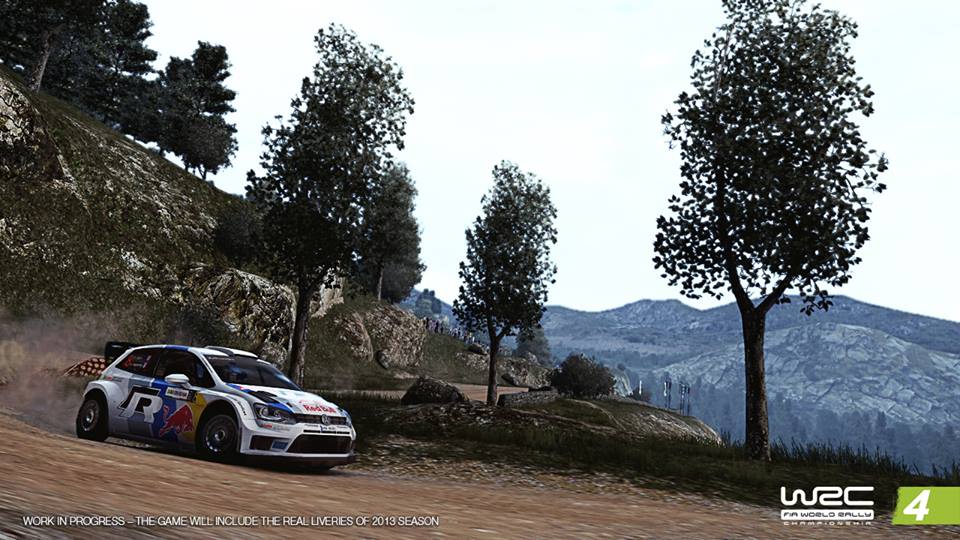
One aspect that has continually let WRC down is the lacklustre audio design; particularly the whimpering whines of the car engine notes. Mercifully, Milestone has listened to fan feedback and addressed this on-going issue by designing completely new audio effects for WRC 4 that are superior in every conceivable way. Engines now sound appropriately brash, raw and realistic, which enhances the sense of speed and environmental sound effects such as the different terrain types have also been improved. Co-driver commands, on the other hand, remain the same as they were before: clear and concise, if a bit monotone and lacking in personality. There still aren’t any female co-drivers either, despite there being an option to select one, bewilderingly.
A special note also has to be given to WRC 4’s rousing replays. Whereas many developers overlook the importance of replays in racing games, Milestone has incorporated new TV-style camera angles that capture the action enthrallingly, with an equally stirring orchestral soundtrack that perfectly complements your car’s graceful powerslides. The only downside is there are no options to switch to external or cockpit cameras.
WRC 4 contains the obligatory suite of multiplayer modes, ranging from local multiplayer between two players and online multiplayer for up to 16 players, but it’s all rather rudimentary. Hot-seat again acts as a simple pass the pad local multiplayer mode where players take it in turns to tackle stages. Online multiplayer on the other hand sees you compete against other players in real time, except they are represented as ghost cars which have a tendency to lag. Like the career mode, WRC 4’s online is functional, but devoid of innovation and variety.
For all of WRC 4’s improvements, there’s still a number of fan-requested features that haven’t been added, which is becoming increasingly inexcusable after four iterations. Rallying is a lonely experience by nature, but there’s still no feeling of competition thanks to the lack of staggered starts with other drivers. I personally would also still like to see a Rallycross side-mode to break up the monotony of racing alone.
But it’s the lack of night rallies that’s most disappointing; they should really be available at this point in the series. After all, they are a staple part of the championship and have featured in past rally games from other developers as far back as the original Colin McRae Rally on comparatively primitive hardware. I sincerely hope this will be added in Milestone’s next WRC game – there will surely be no excuse next time round, especially as the time of day changes are already available in WRC 4.
Sébastien Lost
This year represents a new era for WRC, as Sébastien Loeb’s nine year winning streak has finally come to an end. Next year will also mark a new era for the WRC game series, assuming it will make the leap to the next generation consoles. It’s already been confirmed that Milestone will continue to latch onto the WRC license, so we await to see if they can take the graphics and physics to the next level in the inevitable annual sequel next year, where it will likely face stiff competition from Codemasters’ DiRT 4.
If the rumours that DiRT 4 will return to its rallying roots are correct, it will certainly be a milestone year (no pun intended) for rally games as the increased competition will give the solitary genre significant traction.
But back to WRC 4. It may lack innovation thanks to its mostly incremental improvements, but the restructured career, polished presentation, refined handling, vastly improved audio design and time of day changes all accumulate to make WRC 4 Milestone’s most accomplished rally simulation yet.


